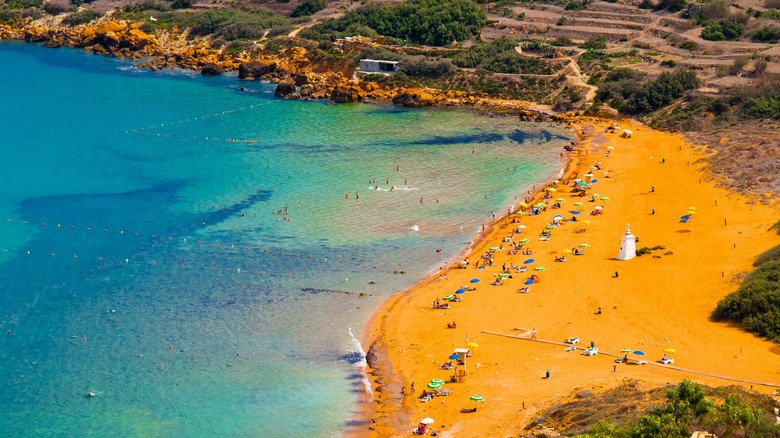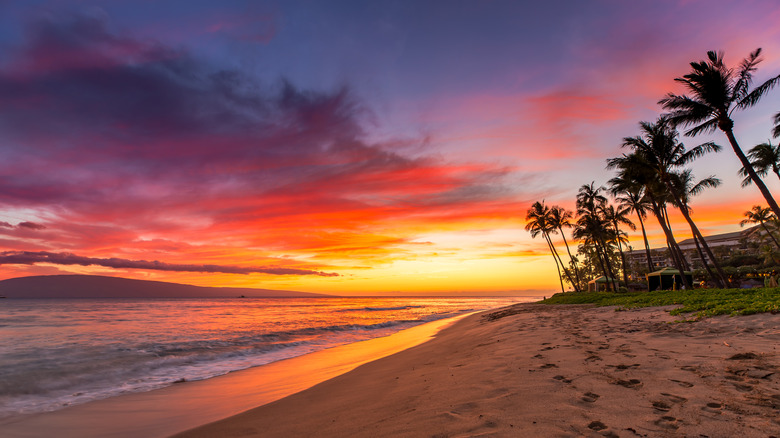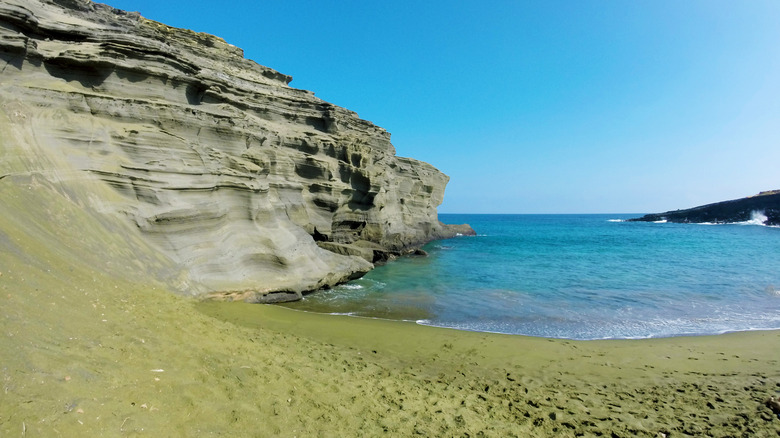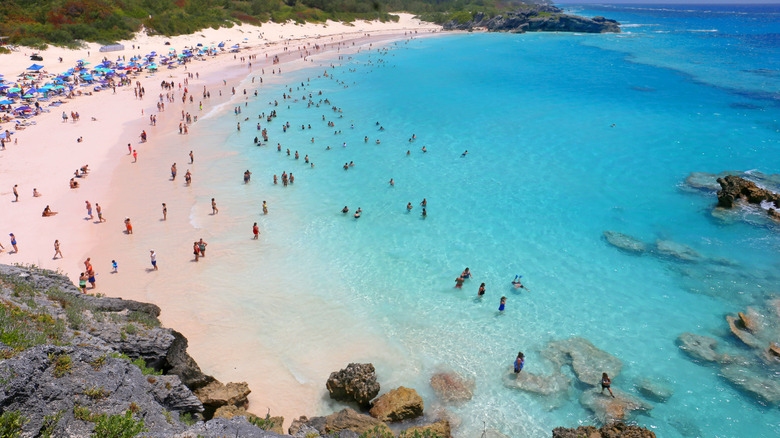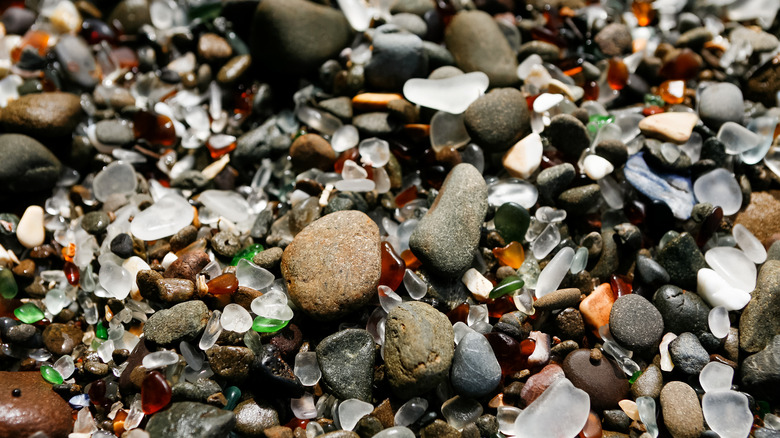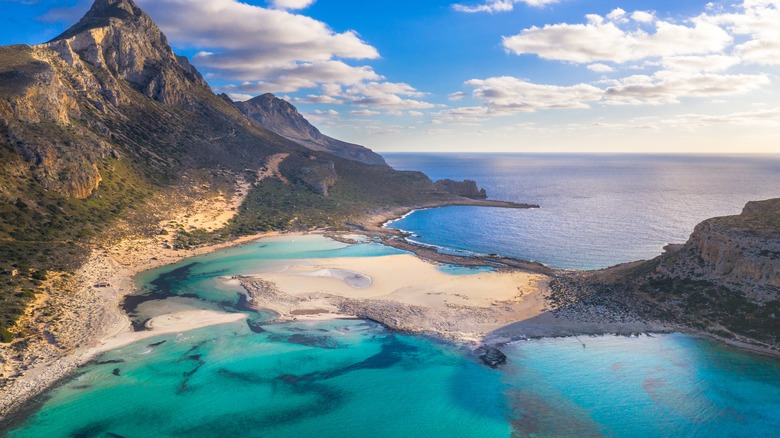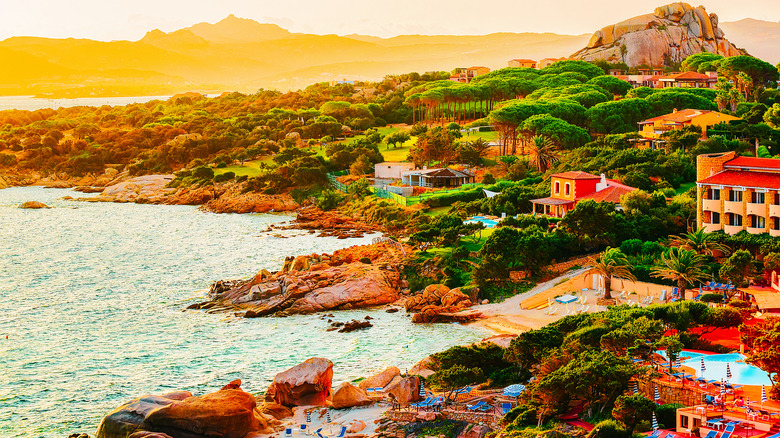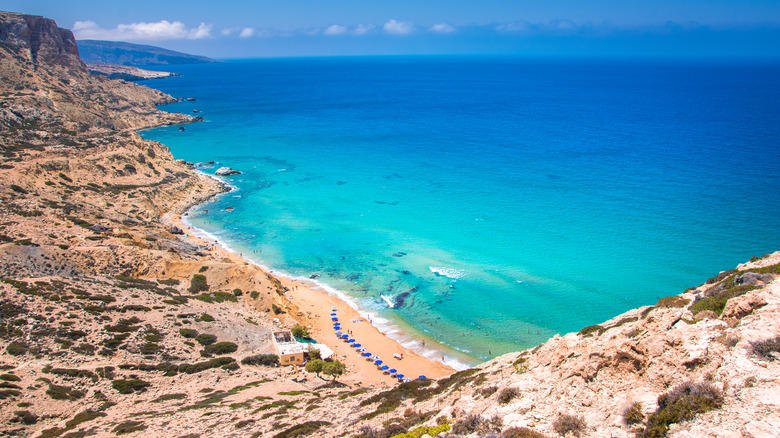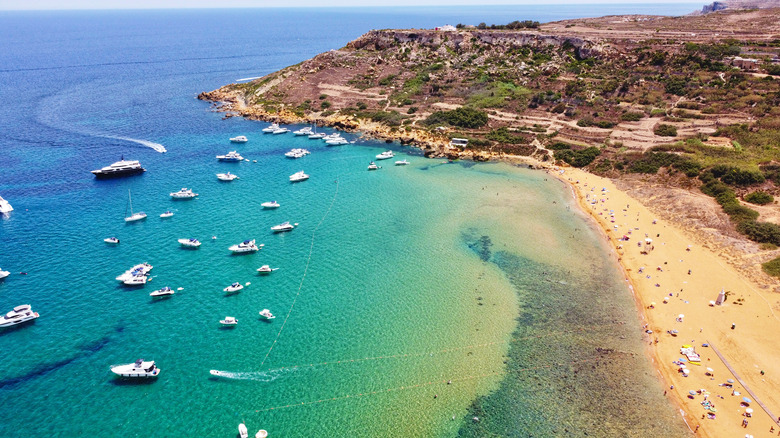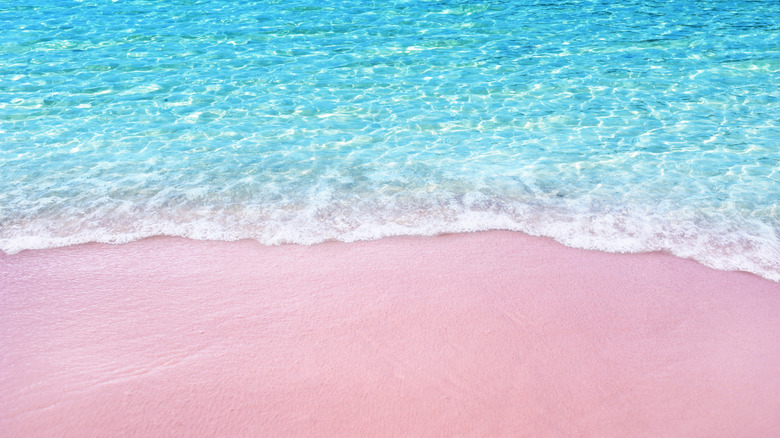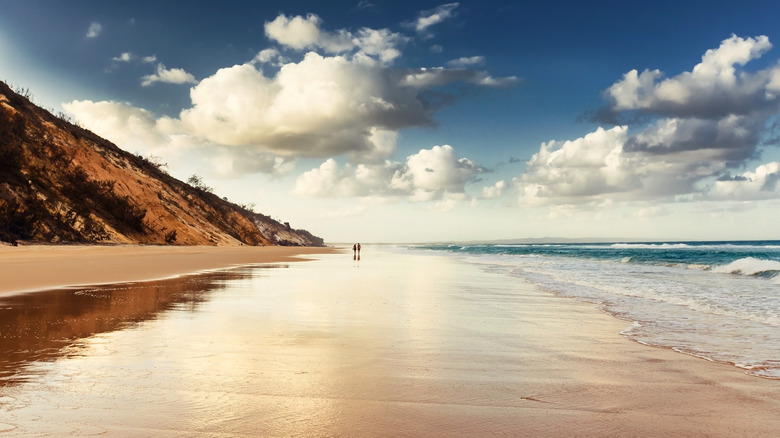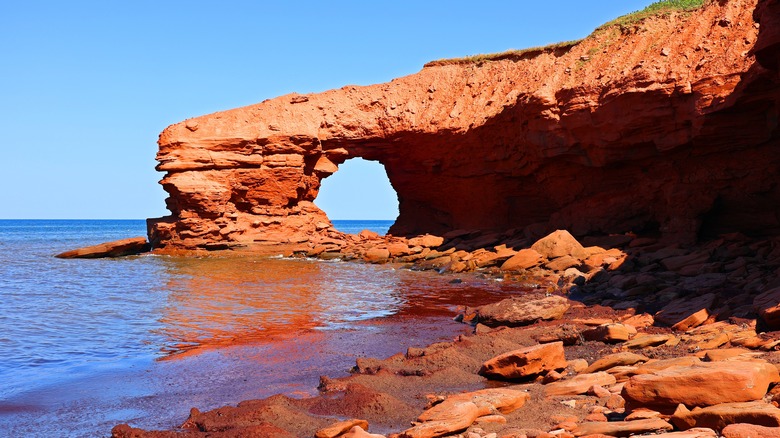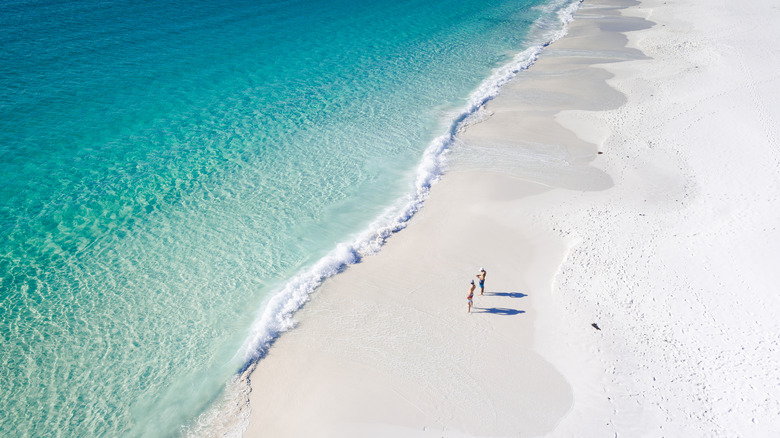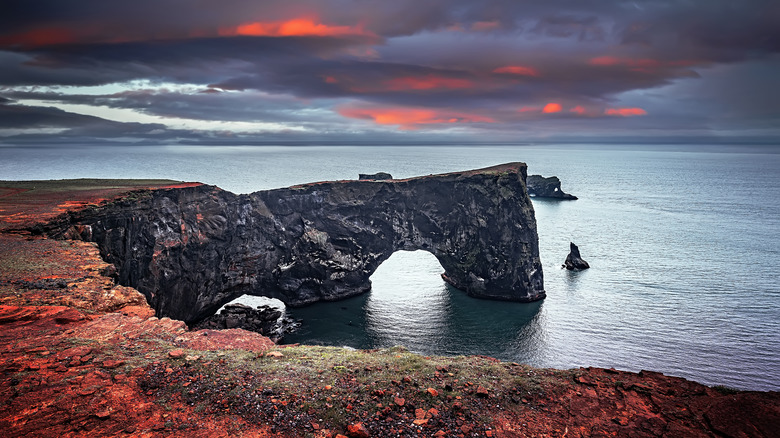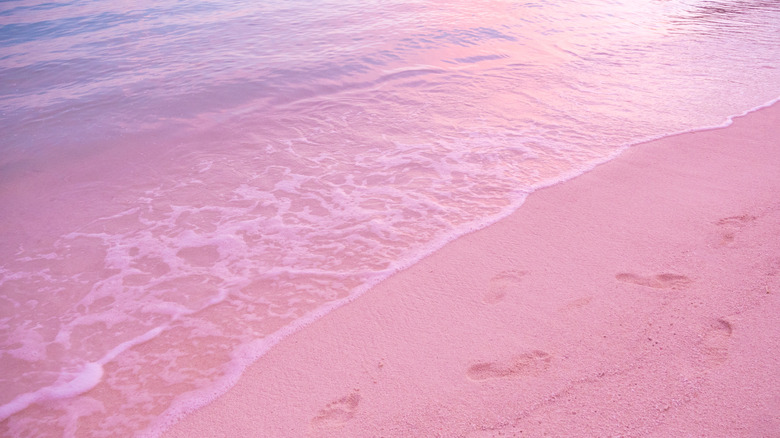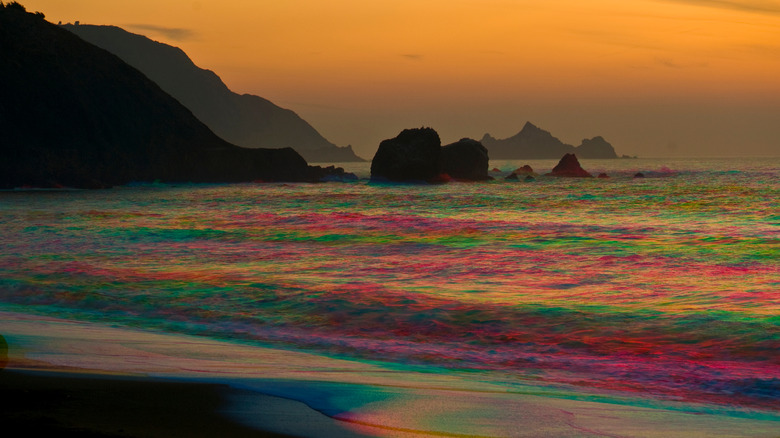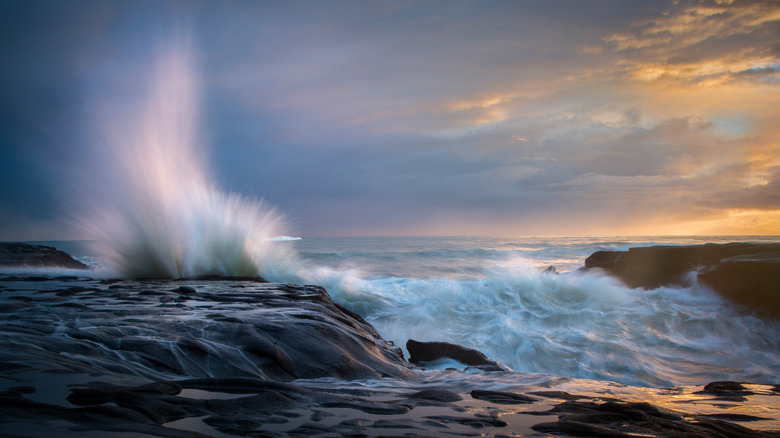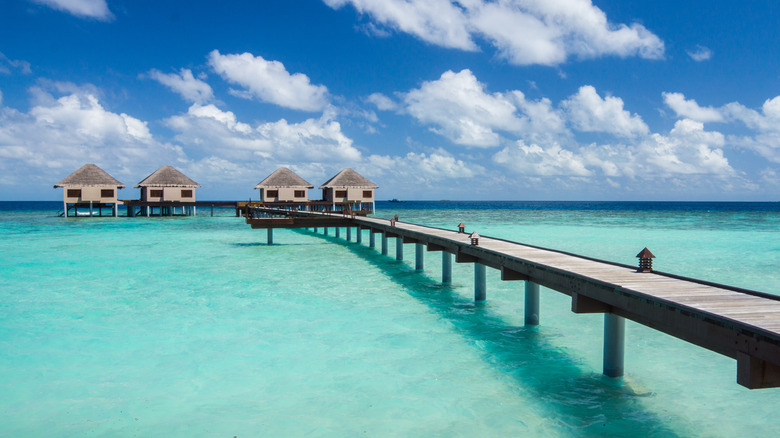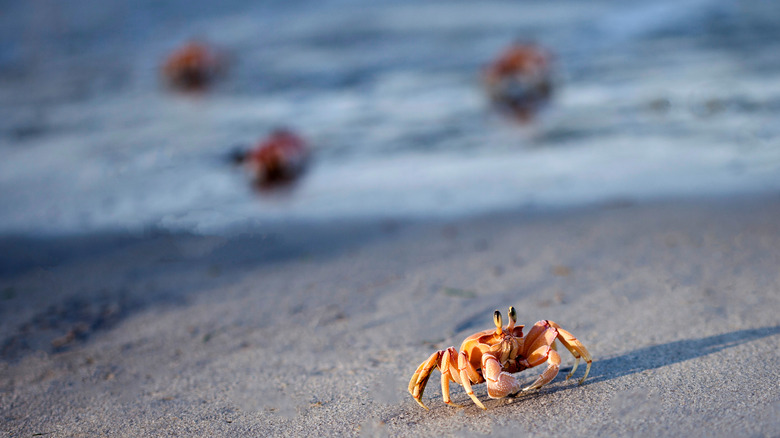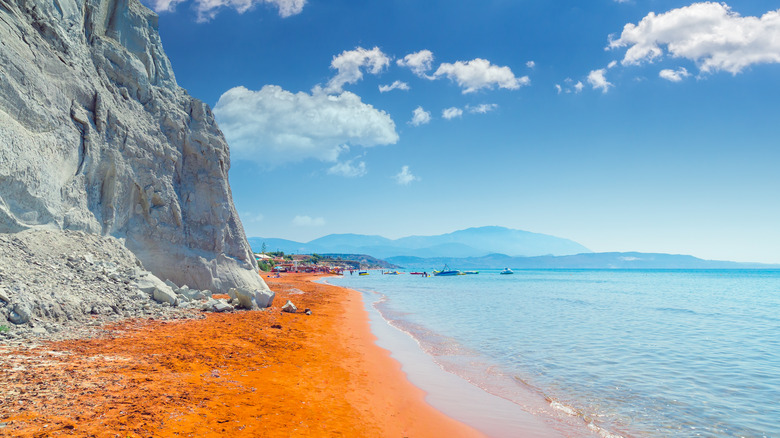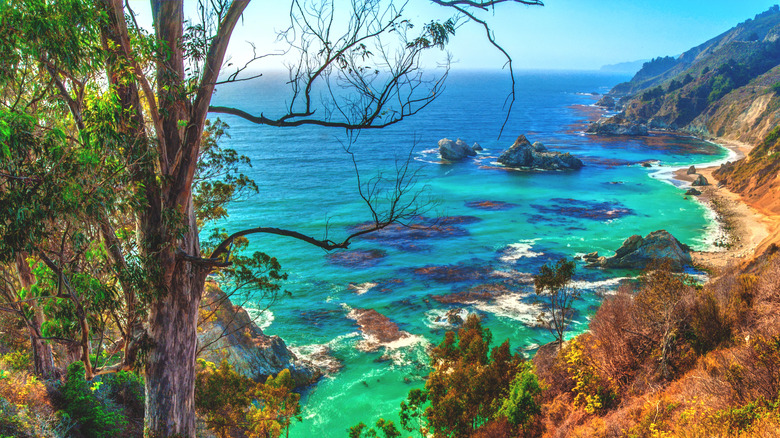Rainbow Beaches You Have To See To Believe
The world is filled with quite a bit of color, and the ocean in particular can be breathtakingly vivid. But even though most of the best beaches in the world are simply associated with blue waters, golden sand and green palm trees, there is a lot more prismatic diversity to the world's shores than that.
Many of the world's most beautiful beaches are natural wonders, especially those in unique geographic locations. Different kinds of rocks and minerals create sands of surprising colors, and one beach in the Maldives even glows at night as a result of microbes. For a breathtaking shoreside trip, these unbelievably gorgeous rainbow beaches will bring color to your vacation.
Red Sand Beach (Maui, Hawaii)
Located on Maui's Kaihalulu Bay, Red Sand Beach is a pocket beach surrounded by red lava cliffs along a rugged coastline. A black offshore reef protects the bay from large waves, making the blue waters here calmer, and the erosion of the nearby iron-rich cinder cone has turned the sand red, making for a breathtakingly stark contrast. Mostly known among locals, the extremely remote beach is a bit dangerous to get to; the trail leading to Red Sand Beach is on a high ridge and is steep and narrow, as well as slippery. As a result of its isolation, many beachgoers here have been known to go clothing-optional.
Papakōlea Beach (Big Island, Hawaii)
The shores of Papakōlea Beach, which is also called Mahana Beach or Green Sand Beach, get their green color from olivine sand (olivine is the primary mineral in the gemstone peridot) that has eroded from the volcanic cone that encloses it. A 3-mile hike along sea cliffs next to the beach leads visitors down to the water itself after a climb down from the volcanic cone.
Horseshoe Bay (Southampton, Bermuda)
It may not be as popular as it once was, but Bermuda is still known for its gorgeous pink sands. The best spot to enjoy them is at Horseshoe Bay, where the faded pink tinge of the sand comes from crushed shells, coral fragments, and calcium carbonate mixing together.
Glass Beach (Fort Bragg, California)
A popular feature of MacKerricher State Park, Glass Beach formed as a result of years of garbage being dumped on the coastline. Over time, the waves wore everything down and turned what was once trash into sparkling, rounded pebbles of many different colors.
Balos Beach (Crete, Greece)
Crete's Balos Beach is yet another spot with pink sand thanks to crushed shells. Looking absolutely picturesque next to the aqua blue lagoon on which it sits, Balos is also home to beautiful wildlife and rare species of plants.
Porto Ferro (Sardinia, Italy)
The bright, light orange color of the sand at Porto Ferro is a result of crushed shells, volcanic deposits and limestone. The clear blue waters of the shore, as well as the green trees surrounding it, serve to make the color stand out even more. Visitors can get a breathtaking view from the 65-foot-high sand dunes that lie behind the beach.
Kokkini Beach (Santorini, Greece)
Although not nearly as famous as the gorgeous sunsets of Santorini, Kokkini Beach is another beautiful sight worth seeing on the island. Popularly known as Red Beach, its sand is made up of pulverized volcanic rock from the Santorini caldera, giving it its color. Landslides have been known to occur in the area, however, so caution is always advised.
Ramla Bay (Gozo, Malta)
High iron content and a lack of volcanic rock makes for the burnt orange color of the sand at Ramla Bay. Located on the beautiful Maltese island of Gozo, the beach is a popular spot for tourists who also come to see the nearby Calypso Cave, said to have been home of the nymph in Homer's "Odyssey."
Tangsi Beach (Lombok, Indonesia)
Fragments of red coral have turned the sand at Tangsi Beach pink. Located on the Indonesian island of Lombok, the beach is relatively secluded and perfect for some calm shoreside relaxation.
Rainbow Beach (Queensland, Australia)
Named for the multi-colored sand dunes that surround the beach rather than the sands right on the water, Rainbow Beach is a stunning locale in the Wide Bay-Burnett region of Queensland. The sand dunes are rich with minerals such as ilmenite, monazite, rutile and zircon, giving them different shades of yellow, orange and red.
Cavendish Beach (Prince Edward Island, Canada)
The iron in the sand at Cavendish Beach has given it a reddish-brown hue that looks beautiful next to the green grass and trees during the summer. Stretching for 8 miles, the beach's east side is especially beautiful thanks to the red sandstone cliffs in the backdrop.
Hyams Beach (New South Wales, Australia)
The coastal village of Hyams Beach in southeastern Australia holds a Guinness World Record for the whitest sand in the world. Made up of pure quartz, the sand here absolutely sparkles and makes for a jaw-dropping scene against a backdrop of crystal blue waters and clear blue skies.
Vik Beach (Iceland)
Also known locally as Reynisfjara, Vik Beach is one of the top non-tropical beaches in the world. Located along the southern coast of Iceland, you'll find amazing scenery here, as well as huge basalt sea stacks called reynisdrangar. Its famous dark color is the result of lava from the nearby volcano Katla flowing into the ocean; the basalt lava cooled immediately and shattered, washing back to the shore to form the black sand. The water here is rough, however, and beachgoers are advised to keep a safe distance of 20 to 30 meters from the waves.
Pink Sands Beach (Harbour Island, Bahamas)
Go for a much safer swim at Pink Sands Beach in the Bahamas, where a coral reef shelters the area to make the waves calmer. Red shells from microscopic creatures mix with white coral to create pastel pink sand that makes for an amazing photo op.
Rockaway Beach (Pacifica, California)
An impressive deep brown color reminiscent of chocolate, Rockaway Beach is a beautiful stop along the Pacific Coast Highway. Blue-grey limestone mixes with volcanic greenstone to create its unique color, and you can get a breathtaking view of all the scenery from a bluff called Mori Point at the northern end of the beach.
Muriwai Beach (Auckland, New Zealand)
The ancient volcanoes around Muriwai contribute to the black sand of its beach, which is in large part a result of iron and titanium. Its sparkling sands sprawl nearly 40 miles on the Auckland Region's west coast, and the beach is also home to a notably large colony of gannet birds.
Vaadhoo Island (Raa Atoll, Maldives)
Wading into the waters of Vaadhoo Island at night is a life-changing experience, and the amazing color you'll find here isn't a result of the sand. Marine microbes in the water known as phytoplankton cause a chemical reaction called bioluminescence, which causes the water to glow with specks of blue, earning it the nickname of "sea of stars."
Playa Roja (Paracas National Reserve, Peru)
Paracas National Reserve in the Peruvian region of Ica is a place teeming with natural beauty thanks to its beaches, cliffs and wildlife. Playa Roja, which means "red beach" in Spanish, has a dark reddish sand that results from waves hitting the surrounding yellowish-orange cliffs of Punta Santa Maria and carrying fragments of rock back to the shore.
Xi Beach (Kefalonia, Greece)
The brightly colored sand of Xi Beach takes on an orange hue, standing in stark contrast to the nearby cliffs of white clay. Located in the Ionian Islands, it's an officially designated Blue Flag beach, which means it's a guaranteed spot for clean coasts, pure water and overall safety.
Pfeiffer Beach (Big Sur, California)
As a result of the manganese garnet crystals that have washed down from the surrounding rocks, you'll find gorgeous swirls of light and dark purple in the sands of Pfeiffer Beach. An amazingly gorgeous location, the beach also features a huge boulder offshore that forms an arch, making for a great place to take photos.
